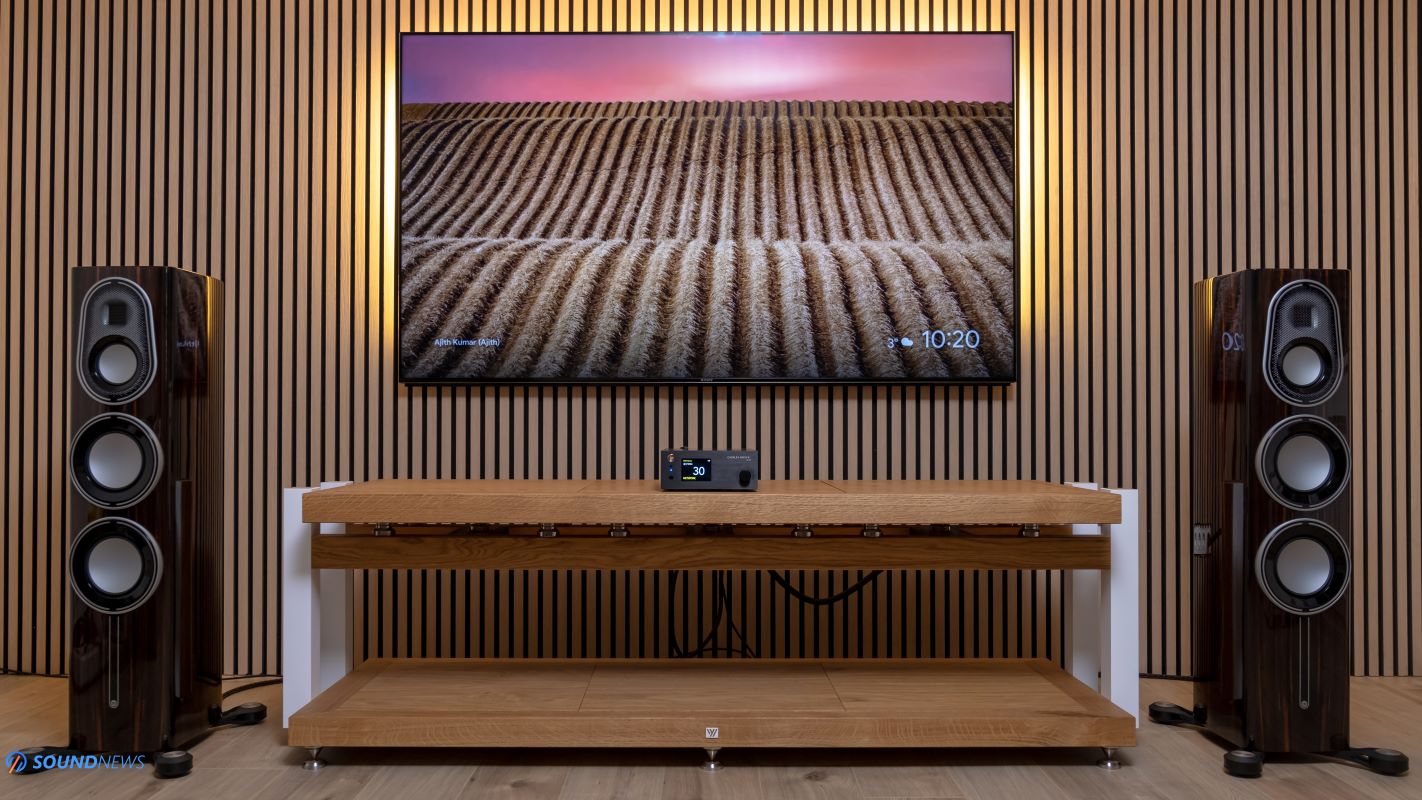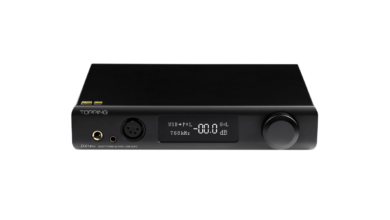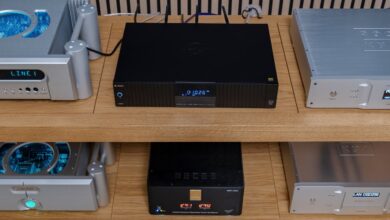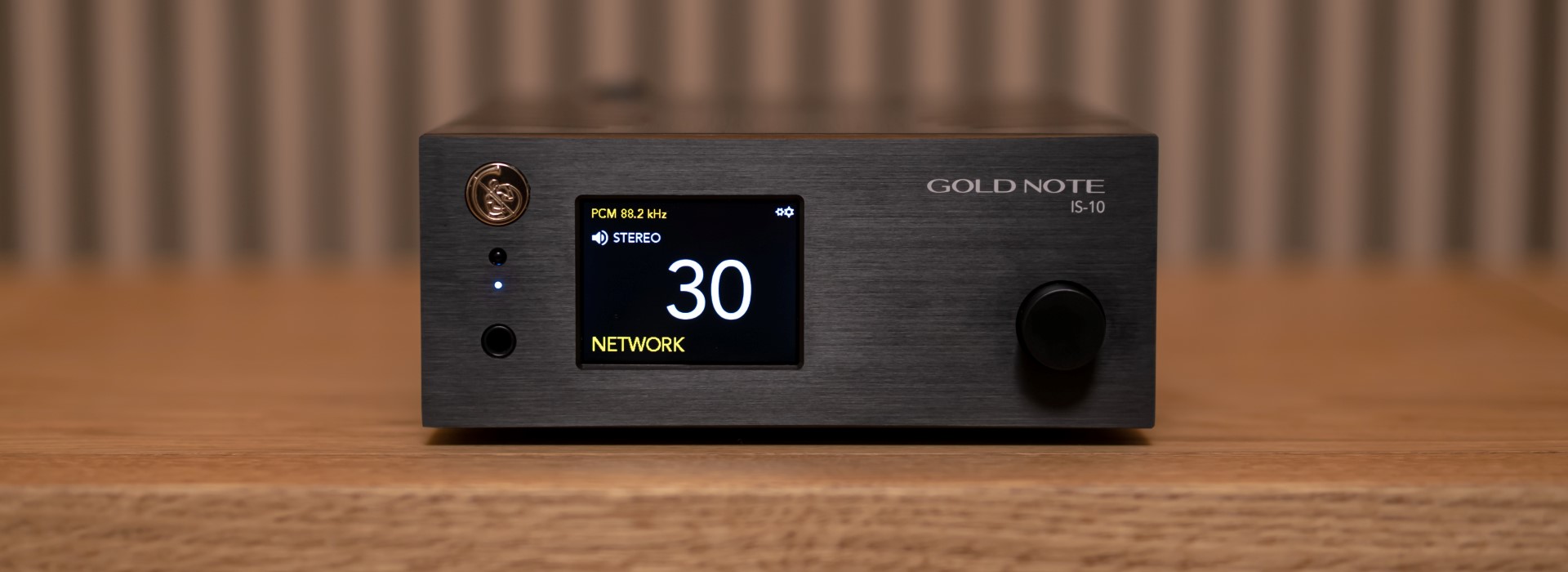
Navigating the corridors of the Munich High End Show 2023, I encountered Tom Dolfi of Gold Note. Our meeting led to a video interview, where he proudly unveiled their latest creation – an authentic all-in-one unit set to make waves in both stereo and head-fi systems, all without denting one’s annual savings. The IS-10 boasted an impressive array of features, seamlessly combining a wireless and wired streamer, music server, DAC, integrated amplifier, and headphone amplifier sections, all housed behind a single piece of beautifully crafted aluminum—a nod to Florentine Renaissance aesthetics, captivating the spirit of Il Suono Italiano. Crafted with passion in the heart of Tuscany, the IS-10 seemed poised to captivate audiophiles and their beloved partners, offering an incredibly high Wife Acceptance Factor (WAF). Its only setback was a distant release date.
Fast forward to October of this year, and the IS-10 finally hit the market. We witnessed its performance at the Warsaw Audio Video Show 2023, where it serenaded tunes within a full Gold Note setup. Despite the hectic nature of the Warsaw show, our inability to reconnect with Tom served as a testament to Gold Note’s increasing influence, particularly in Europe.
Now, I must spill the beans – Italy is my absolute favorite country on this crazy spinning globe. Initially, it was all about history; I share a cosmic connection with Italians, and every visit feels like a homecoming. Last year, my wife had a gnarly accident, enduring three surgeries on her right foot. In solidarity, I stayed put, promising to triple our travels in 2023. True to my word, we jetted off to Italy thrice, exploring both Eastern and Western coastlines, meandering through Florence, and soaking in Tuscany’s vastness.
When I observe Gold Note’s creations, I sense the influence of Florence not just when the music begins playing but also when inspecting the unit with my bare hands. There’s something about this team that sets them apart. I find solace in the existence of such companies today.
In an era where many relocate their operations to Asia or India in a cost-cutting frenzy, Gold Note has resisted this trend and will continue to do so. There’s a strong sense of pride at play in the development and crafting of these units. I’m convinced that both Tom Dolfi (Product Manager) and Maurizio Aterini (CEO) are deeply tied to a rich history and culture, striving to carve their way into the future.
The IS-10 arrived at our headquarters just before our departure to Warsaw, and I’m relieved that I didn’t hastily assess it. After trying it out for over two months, and undergoing a few software updates along the way that addressed minor glitches, I’m now ready to share a story about the IS-10 and tell you why it just might be your cup of audiophile tea.
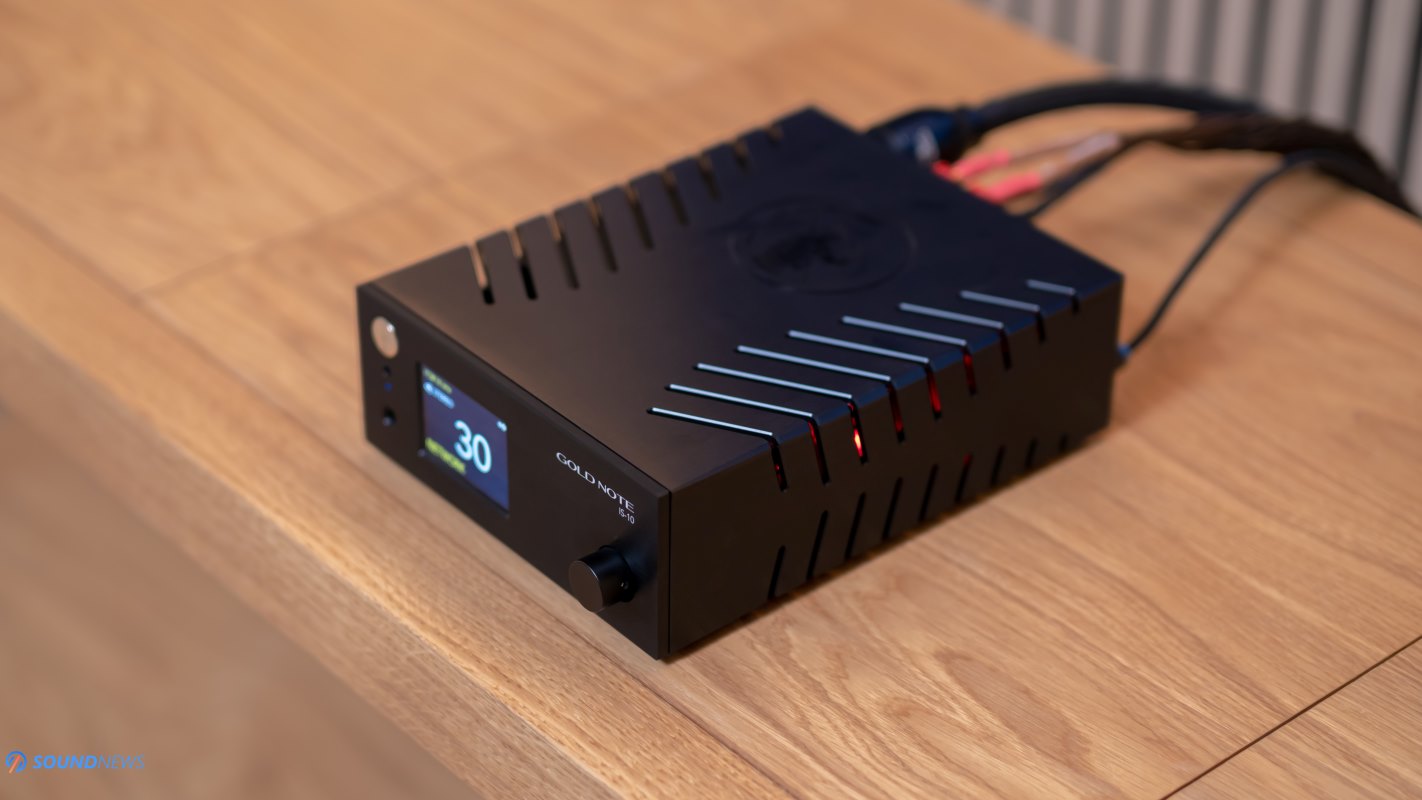
Design & Build Quality
When it comes to design, challenging the descendants of Michelangelo, da Vinci, Botticelli, Donatello, Ghiberti, and many others would be pure madness. A simple glance at an Italian car reveals smooth, beautiful lines, exquisite interiors, and a design language deeply rooted in their DNA. Unlike others, Gold Note manufactures everything in-house, from PCBs to cases, speakers, turntables, HiFi racks, and every conceivable accessory a music lover could desire. Even though the IS-10 is part of their entry-level series, not a single bolt or screw was left to chance. Our review sample came in black, and upon careful inspection, you start noticing those small details that can make a major impact. Like the DS-10 PLUS before it, the IS-10 is crafted to the highest quality standards, maintaining consistent design cues across its product lineup. Spotting a Gold Note unit from a mile away at a HiFi event is free marketing in action.
Adhering to the “if it ain’t broke, don’t fix it” slogan, the IS-10 inherits Gold Note’s traditional aesthetic features while showcasing high-quality craftsmanship. If you’ve perused our DS-10 PLUS and PSU-10 EVO review, you already know how the IS-10 looks, as it closely resembles its twin brother, with a few changes in terms of I/O. Many units with see-through cases for better ventilation are plain and simple, but Gold Note adds a touch of refinement, making it not just functional but also beautiful, reminiscent of Italian sports cars revving around Tuscany’s green roads. The color options – black, silver, or gold all come in matte finishes. I occasionally mention the Wife Acceptance Factor (WAF) in my reviews, as units in the living room need approval. After revealing that the IS-10 came from Florence, it not only earned the green light to stay in the living room but also sparked curiosity about its functions and a request for a listening session. Women and Italy – two lines destined to intersect.
Constructed from thick CNC-machined aluminum, the noticeable thickness between the fins adds to a positive first impression of a high-quality product. The golden coin on its faceplate and the prominent rounded logo on top contribute to its visual appeal. With decent ventilation all around, stacking it atop an Ethernet switch for a tidy setup is a breeze. It only warms up mildly after a few hours of use, and while leaving it in a well-ventilated area isn’t mandatory, it’s a clever move for a longer lifespan.
Underneath, four rubber feet elevate it about 8mm from the ground. Higher-quality feet could be used, but it never got hot after several hours of use. At 20 cm wide and 8 cm tall, it’s currently the slimmest all-in-one unit we’ve tested, and at 4 kilos (~9 lbs), it feels packed with heavy metal work, exuding sturdiness and heft. I appreciate it when HiFi equipment is heavy, robust, and well-made, anticipating a long service life over the years—an expectation already met with the IS-10.
Last but certainly not least, the stock remote control isn’t the usual plasticky remote you’ll find with Chi-Fi devices. It stands out as a nicer remote capable of controlling every electronic device released by Gold Note. This particular remote is familiar to me, as Rockna Audio uses the exact one for all their high-end DACs. After enduring countless low-fi plasticky remotes over the years, Gold Note’s remote is sturdier, offering longer presses that are more satisfying to press.
In the end, it’s the same familiar case that I’ve been playing with for a while now. The IS-10 is essentially the DS-10 PLUS with additional features thrown in, boasting an outstanding fit and finish.
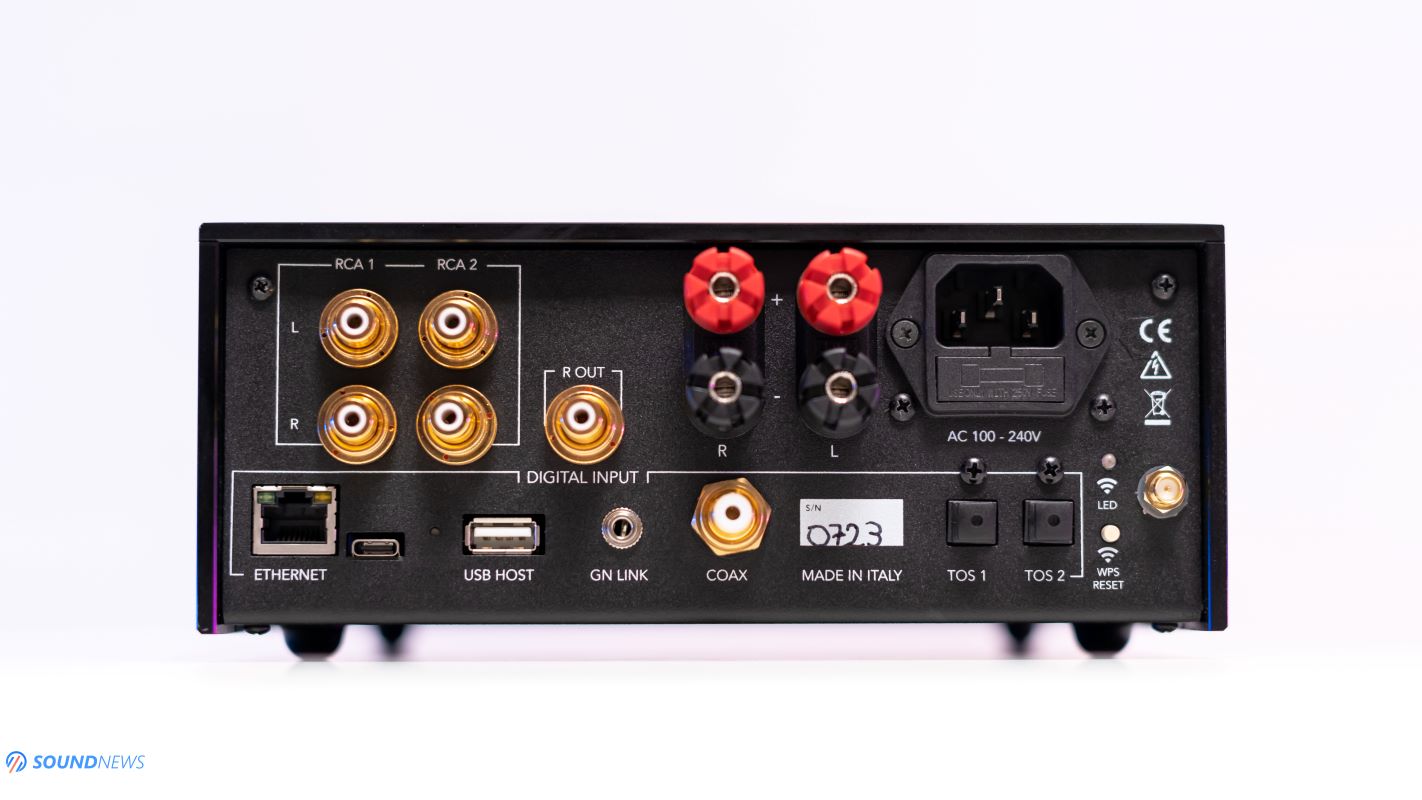
Controls & Connectivity
While the faceplate may not reveal much at first glance, the volume knob on the IS-10 is a versatile performer. A short press cleverly transforms it into a menu opener, and a prolonged press turns it into the almighty On/Off button. The knob itself doubles as a navigation tool through the user-friendly UI. Fear not if the remote control is playing hide-and-seek – a short press on the volume knob activates a simplified UI for easy browsing.
Front and center on the faceplate, you’ll find the essential On/Off button disguised as a volume wheel, there’s a vibrant display and a 6.35mm headphone jack. Flip it around, and the IS-10 reveals a treasure trove of digital inputs, including Ethernet, USB type A, Coaxial, and a duo of Optical ports. For analog enthusiasts, there are two pairs of RCA analog inputs, just in case you fancy using it as a standalone integrated or headphone amplifier. If you’re feeling adventurous, there’s even a mono RCA input for transforming it into a mono amplifier when paired with a PA-10 EVO power amplifier, cranking up the power output to a hearty 280W per channel in 8Ω. And, of course, there’s a Wi-Fi antenna, an IEC socket, and a pair of speaker terminals. For those aiming to streamline their Gold Note empire with a single remote, behold the lone GN Link connector, a 12V trigger in disguise. It’s like the Swiss Army knife of connectivity but for audiophiles.
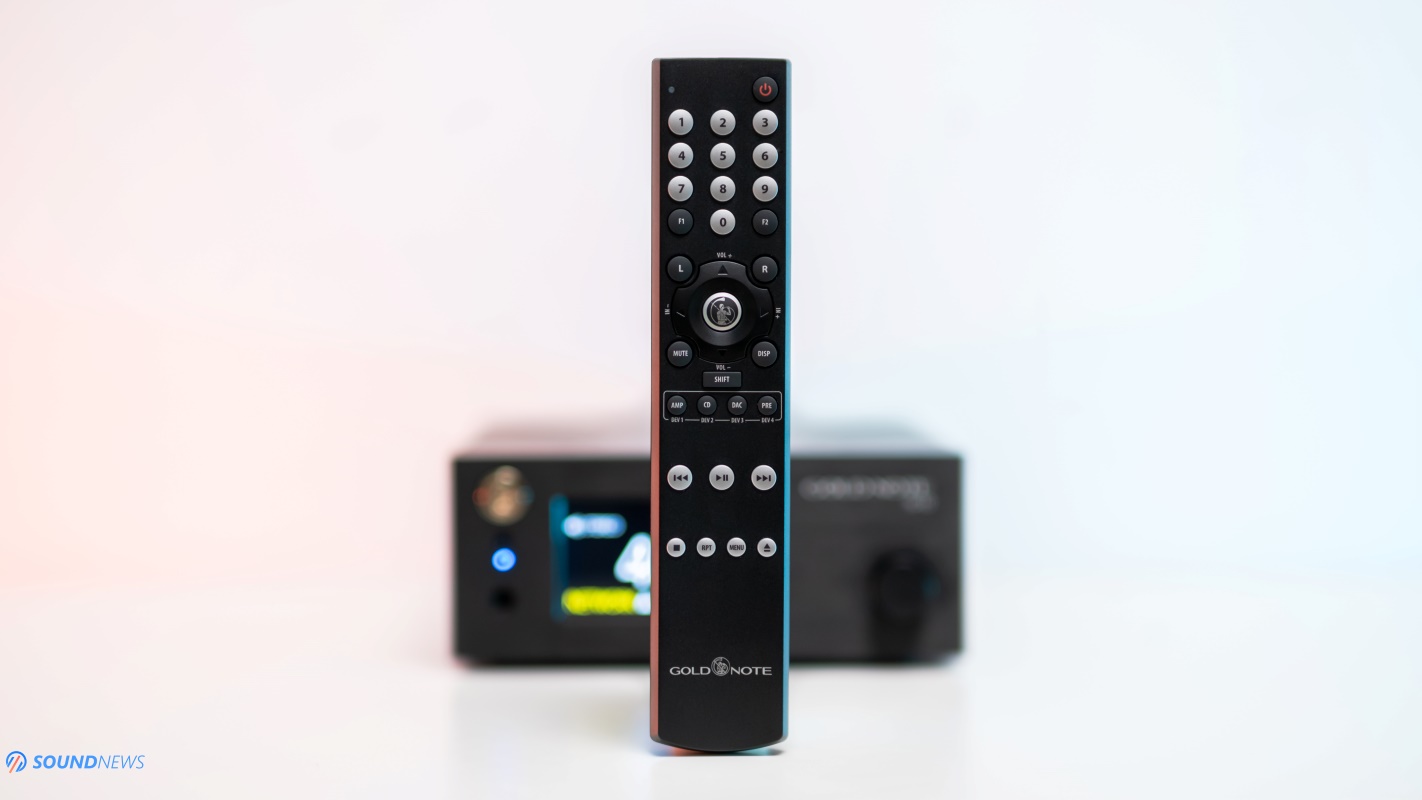
Under IS-10’s Hood
I usually pop the hood even before I’ve let the music play on our test benches, but cracking open the IS-10 turned out to be more of a challenge than expected. Four ribbon cables elegantly weave from the main PCB to the display assembly, then to a daughter board, and finally to the power supply. Despite its compact size, the IS-10 is crammed with electronics—three floors of them. Everything felt snug to the point where I decided to close the case, realizing that a reckless venture into its innards might result in a damaged ribbon cable. So, I abandoned the idea of a peek, opting instead for the insights available on its official webpage.
First and foremost, the IS-10 is an advanced streamer, offering both wired and wireless options. Its GN Control app available for iOS and Android devices is intuitive and user-friendly. Link your Deezer, Tidal, Qobuz, Spotify, and vTuner Internet Radio accounts, and dive into streaming high-resolution content. Handling 24-bit PCM files via Qobuz and MQA files via Tidal, the IS-10 even lets you link your Dropbox or OneDrive cloud services and play your content directly from there. The app transforms it into a potent music server, capable of playing music stored on an external USB drive of up to 32 GB in size. After testing both wired and wireless connections, Ethernet proved to be the optimal connection, delivering the best sound quality. It can serve as a Roon endpoint due to Roon Ready certification and on top of that it supports Apple’s AirPlay, Tidal Connect & Spotify Connect. You get a complete package, a true Future-Fi all-in-one unit.
Next in its arsenal, the IS-10 doubles as an advanced digital-to-analog converter (DAC), employing the latest-generation silicon from Asahi Kasei Microdevices. Though the specific DAC chip is still pending official confirmation, signs point to the renowned AK4493 DAC chip, capable of natively decoding PCM up to 32-bit/768 kHz and DSD512 files. While not the absolute top-tier DAC chip, the components surrounding it shine. The switching mode power supply is well-crafted, boasting ample capacitance for power filtering and storage.
Venturing into the third role, the IS-10 transforms into a potent integrated amplifier, marrying a preamp with a power amp stage. It dishes out up to 90W per channel in 8Ω, 140W per channel in 4Ω, and an astonishing 280 Watts per channel in 8Ω when employed in mono mode alongside a PA-10 EVO (sold separately) for some dual-mono magic. The amp is based on a Class-D design, modified to deliver a performance closer to a Class-B amplifier, which already hints at a dynamically rich sound that we should expect.
Lastly, it showcases an impressively robust headphone amplifier with two gain stages. Low-gain caters to sensitive IEMs and portable headphones, while high-gain tackles the most demanding loads out there. While official power numbers are elusive, it surpasses the DS-10 Plus, which offers 5 Watts per channel into a 32Ω load. In a dedicated chapter, I’ll delve into how it fares with high-impedance and low-sensitivity planar headphones. I was informed that the headphone amplifier circuit is no longer driven by 5V as was the case with DS-10 PLUS, getting juicier 9V with an extra buffering stage that should seriously boost dynamics with hard-to-drive headphones. With the IS-10, all you need is a smartphone, a pair of speakers or headphones, a glass of red wine, positive vibes, and a lengthy playlist. No PCs or additional electronics are required to kick back and savor your tunes—this is undeniably its standout strength.
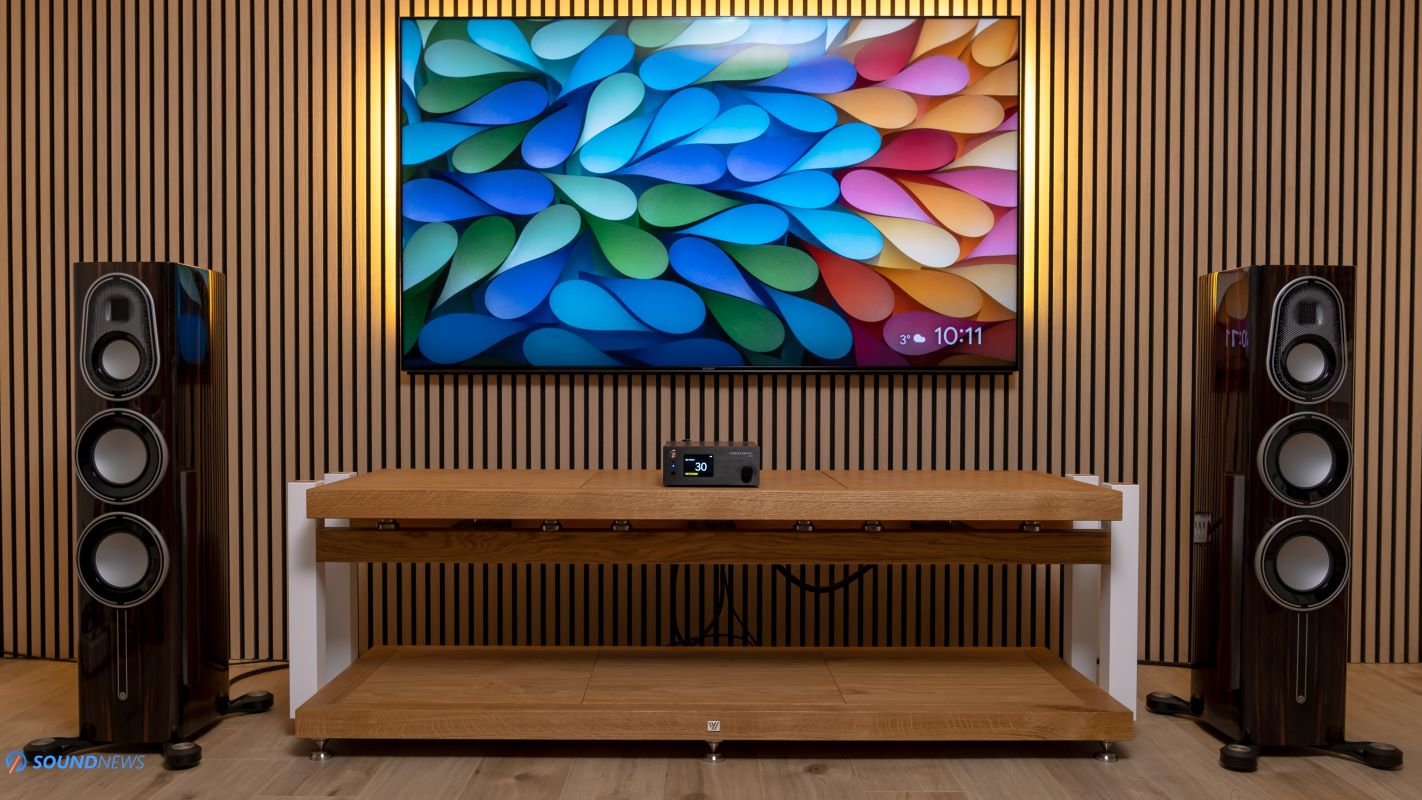
Test Equipment
To thoroughly assess its capabilities, I subjected the IS-10 to two distinctive setups:
- Head-Fi Setup: In my office, the IS-10 donned the hat of a Roon endpoint (streamer), DAC, and headphone amplifier. Precision was the name of the game, as I implemented meticulous measures such as the complete isolation of the Ethernet connection with media converters (Ethernet > Optical > Ethernet). The media converters and the wireless router basked in power from a KECES S14 linear power supply. To enhance the sonic landscape, I introduced an LHY SW-10 Ethernet switch and, at a later juncture, an Ansuz PowerSwitch D3. Both additions unexpectedly elevated the sound quality more than my seasoned ears anticipated.
- Living Room Setup: Later in the game, the IS-10 made its way to the living room, replacing a formidable lineup: a Chord Electronics DAVE DAC, Ultima 3 preamplifier, Ultima 5 power amplifier, an EverSolo DMP-A8 streamer, and a Plixir EliteBAC 1500 passive power conditioner. The IS-10 took on the responsibilities of five units, and we’re about to dissect how well it performed in these multifaceted scenarios.
Alright, everyone, strap in – my body and soul are ready for some well-deserved music, so let’s hit some eardrums!
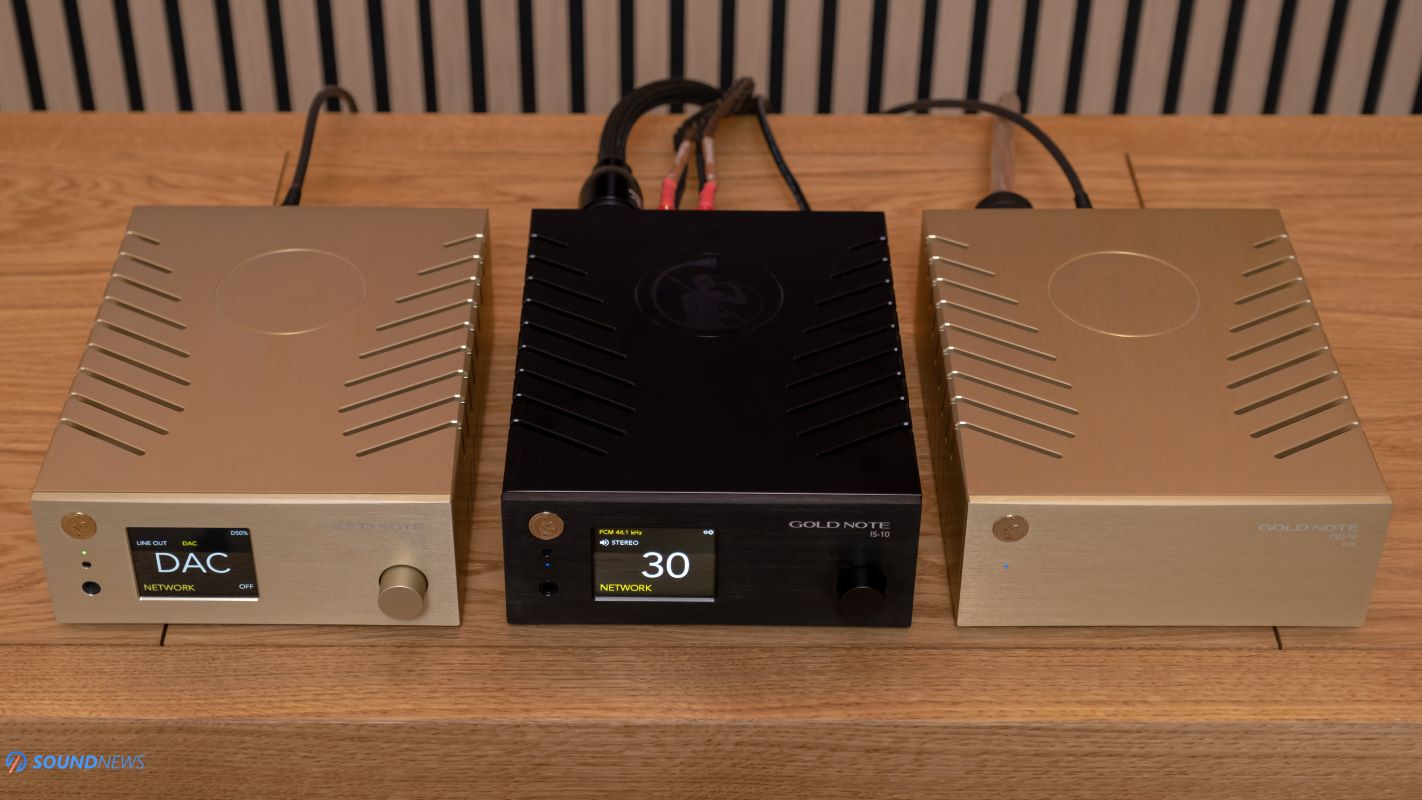
Sound Performance
I. GN Control App & Streamer Capabilities
I’ve been using the GN Control App for several years now, and seeing it updated occasionally lets me know that new products are being developed to utilize this straightforward yet powerful tool. First and foremost, whether you’re an Android or iOS user, the program has you completely covered. Once you connect the IS-10 or any other streamer from their group to the internet and your smartphone is connected to the same network, the IS-10 will appear in the Play To tab and in the Settings tab, where you can update its firmware, enable or disable certain streaming services.
The GN Control app currently supports Deezer, Tidal, Qobuz, Spotify, and vTuner Internet Radio, as well as DropBox and OneDrive cloud services from which you may play your music. While Apple Music is not yet supported, you may always use Apple’s Airplay if that’s your preference. I prefer to listen to Qobuz and Tidal and, in my opinion, Qobuz sounds superior to any other streaming service.
After you enable one or more streaming services, the app will request you to log in and then you’ll be able to start streaming your favorite tunes. While this isn’t the OG Tidal or Qobuz app, the overall experience is very similar. You have the usual suspects, including your saved playlists, favorites, and purchases. The Favorites tab is broken down into albums, tracks, and artists, and this is where I hang out most of the time. The app itself feels responsive if you have a strong internet connection and it’s also bug-free at this point. Although IS-10 can function via Wi-Fi and I used it that way for nearly a month, I believe there is a moderate improvement in sound and app behavior if an Ethernet connection is utilized. If you want the very best performance from this unit, I propose using a better Ethernet switch after your router. If you require a recommendation, here’s one, and if you need a slightly better option, Melco’s S100/2 is one of the finest switches I’ve tried at my place and if you need the father of all switches, then Ansuz PowerSwitch D3 is the ultimate switch money could buy.
If you connect a disk drive to the rear of the unit through USB Type A, then in the Music tab, you can select that drive from the Local Server option and play your offline music. This is probably the best option you have in terms of quality, as it completely bypasses your network and streaming services.
All in all, I have no complaints about this app; it has everything I need to start streaming both offline and online music. The volume controls on your smartphone will control the volume of your unit, and you may even change the gain settings of the headphone amplifier section and pick a desired digital input, which I find quite useful.
But hold up – some folks are vibing with native Tidal and Spotify apps, and this is where Tidal Connect and Spotify Connect come to the rescue. Simply open any of these apps, click the streaming icon in the upper right corner of your smartphone, choose the IS-10, and you’re all set and ready to go! Tidal Connect worked great for me, and even though the GN Control app is excellent, there are still minor quality-of-life improvements when using native apps, such as the discovery button, which recommends new music based on your listening habits, the share button – you know, the sweet stuff.
But there’s a feature that makes my heart race – Roon Ready certification! Once you have a Roon server set up somewhere in your home, the IS-10 can function as a Roon endpoint, and that, my friends, is a significant deal! I’ve been using Roon for almost two years now, and it’s been a transformative listening experience, and that’s how I prefer to listen to my tunes most of the time. Certainly, Tidal Connect is more convenient, but I prefer to create massive playlists that blend tunes from Qobuz, Tidal, and my offline music collection, and as far as I know, only Roon can pull that off. It synced seamlessly with my Roon Core – no hiccups, just pure musical bliss.
In a nutshell, the IS-10 isn’t your run-of-the-mill streamer; it’s a powerhouse. GN Control app, Tidal Connect, and Spotify Connect as well as an offline music playback sounded fantastic. WiFi or Ethernet? Go for Ethernet, speed up the app for a smoother overall experience and a sprinkle of sound quality magic.
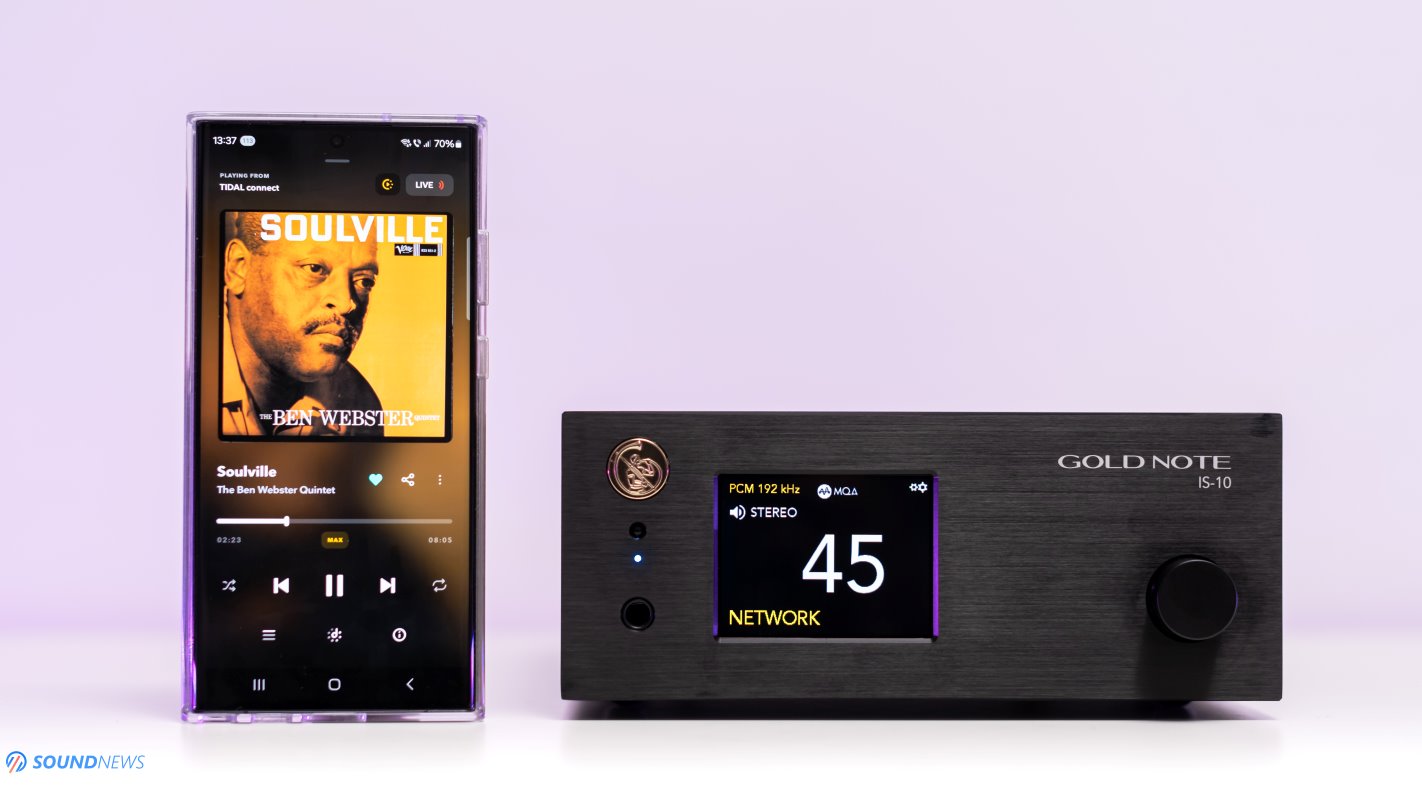
II. Living with IS-10 feels like living in the Future
Gold Note draws inspiration from the groundbreaking advancements made during the High Renaissance, over six centuries ago. Some of the most brilliant minds of that era hailed from the vicinity of the Gold Note factory. With their extraordinary talents and skills, these individuals seamlessly fused science, art, and imagination to reshape the world we know today. Extraordinarily skilled figures like Leonardo da Vinci, Giorgio Casaro, Raffaello Sanzio da Urbino, Michelangelo di Lodovico Buonarroti, and many others left an indelible mark on our world.
Gold Note is profoundly inspired by these achievements and is constantly striving to push the boundaries of current technology. After extensively testing various units, I can confidently assert that while the IS-10 may lack a flashy touchscreen, its feature set is akin to something straight out of da Vinci’s workshop.
Just consider this – the IS-10 boasts an arsenal of features that no other component can match. Those five metallic boxes that typically adorn my HiFi rack can be effortlessly replaced by this single unit. And to my surprise, the IS-10 didn’t feel like a significant downgrade from my electronics, which combined cost almost 20 times as much. Did the sound quality suffer a 20-fold reduction? Absolutely not! I never felt like anything was lacking.
The only tweak I made to enhance the DAC’s performance was adding an LHY SW-10 switch to purify and re-clock the Ethernet connection. Apart from that, the IS-10 could easily replace a multi-box HiFi setup, offering a clean and elegant solution. Combining a dedicated DAC, wireless and wired streamer, music server, a 90-watt per channel stereo integrated amplifier that can also function as a mono amp delivering a whopping 280 watts in the same load, and an exceptionally sounding headphone amplifier capable of powering any headphone imaginable – it all feels too good to be true, but it’s the reality.
I’ve had the opportunity to test the IS-10 with five pairs of speakers, some of which were incredibly rare, and over 10 pairs of high-end headphones. The results were nothing short of remarkable. The IS-10 powered them all effortlessly and with authority. I don’t see any reason to purchase a PA-10 for dual mono operation unless you absolutely need the extra power for exceptionally inefficient speakers.
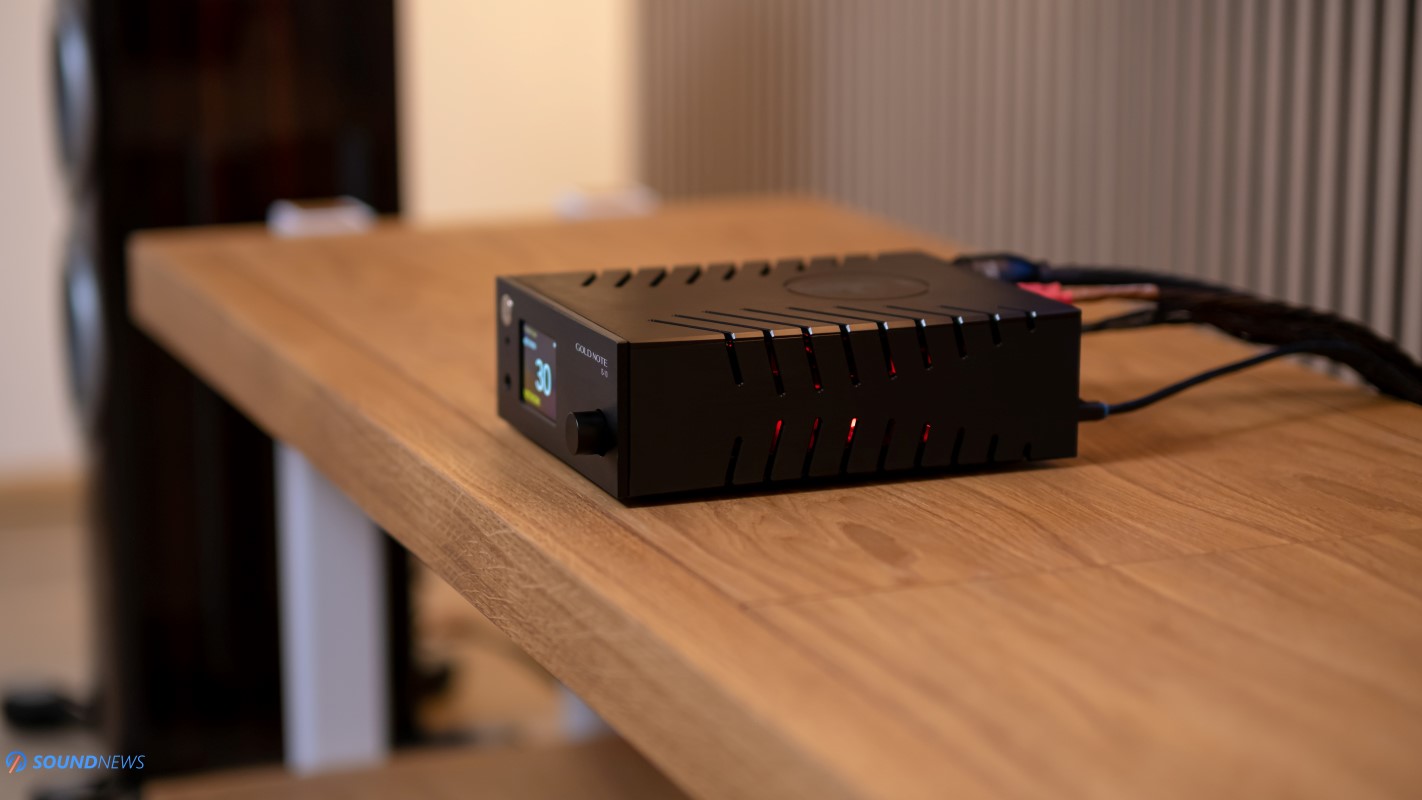
III. Sound Impressions
Before I delve into the sonic wonderland of the IS-10, it’s crucial to note that most of my listening evaluations were conducted with the KEF Reference 3 for €13,500 and the Monitor Audio Platinum 200 G3 for €12,800. However, I also had the delightful opportunity to sample its capabilities on the Raidho TD 2.2 for €40,000 and a couple of more budget-friendly loudspeakers, namely the Audiovector QR5 for €4,200 and the Sound Of Eden Crescendo UNO for €3,100. While the sensitivity of these speakers varies marginally between ~86 and around 90 dB, only the Crescendo UNO demanded more power from the IS-10, requiring upwards of 50% power for higher SPLs.
Regardless of the speakers I paired with the IS-10, it handled them all with finesse and ease. In most cases, I found myself comfortably listening at volume levels ranging between 45 and 52 out of the 100 available. However, it’s essential to exercise caution when adjusting the volume using your smartphone, as the IS-10 can crank up the sound level remarkably quickly. There were a few instances where I absentmindedly tapped the volume up button, only to discover that the volume had soared to 65 in mere seconds, causing the walls to tremble.
While the IS-10 may not intimidate hardcore audiophiles with its compact size and lightweight design, its power output of 90 watts per channel in 8Ω and 140 watts per channel in 4Ω is more than enough to satisfy even the most demanding loudspeakers. For those seeking absolute control and the fastest transient response, the PA-10 EVO amplifier can be added, providing up to 280 watts per channel into 8Ω and close to ~500 watts in 4Ω.
The whole unit consumes around 35 Watts in total, which is incredibly efficient for an all-in-one unit that packs such a punch. This is thanks to the innovative technology developed specifically for the IS-10, which allows it to deliver Class-B amplifier-like performance while consuming minimal power. This power efficiency is further enhanced by the IS-10’s self-adjustable damping factor and monoblock function, which ensure that it can seamlessly pair with a wide range of loudspeakers, regardless of their size, efficiency, or sensitivity. This makes the IS-10 a truly versatile amplifier that can handle even the most demanding loudspeaker setups.
My expectations for the IS-10 were sky-high, given my positive experiences with their DS-10 Plus streamer and DAC. And I wasn’t disappointed. The IS-10 delivers the same warm, inviting sound signature, with a slightly enhanced midrange and bass response. This adds a touch of richness to the ceramic drivers of the Crescendo UNO and a subtle lushness to the AMT tweeters of the MA Platinum 200. Even the KEF Reference 3 speakers, known for their precise and detailed sound, acquired a livelier and punchier quality when paired with the IS-10.
Is this the Il Suono Italiano (The Italian Sound) that I’ve been acquainted with for a little over two years now? Undoubtedly! The sound subtly leans towards the warmer side of neutral, with the bass and midrange taking the spotlight. These aspects shine brilliantly on this unit, injecting some substance into the slender frames of ceramic drivers (Crescendo UNO). There’s a touch of lushness to the AMT tweeters of MA Platinum 200, and even KEF’s Reference 3 exhibits a livelier and punchier demeanor compared to electronics crafted in Asia. Surprisingly, the IS-10 imparts additional weight to the entire midrange and bass regions, a revelation considering its compact size.
While the upper end boasts beautiful definition and occasional sparkle, it avoids the pitfalls of being overly bright or edgy. Though not quite as refined as the DS-10 PLUS powered by the PSU-10 EVO, the IS-10 holds its own. While the latter power supply unleashed the maximum potential of the DS-10 PLUS, you can perform similar feats with the IS-10. Rest assured; it already exudes a proper HiFi quality from any vantage point.
Remember the recent review of the EverSolo DMP-A8, where I dubbed it full-bodied and resolving simultaneously? Now, picture the IS-10 as an even fuller and denser sonic experience, though it doesn’t quite match the revolving and transparent qualities of the DMP-A8. It triumphs in the lushness department, alleviating digital glare and mitigating listening fatigue for a more laid-back experience compared to the DMP-A8. It gracefully concedes the resolution game, with the DMP-A8 boasting a slightly clearer sound on all fronts. Despite this, the two units share more similarities than differences in tonality, both aiming for a smoother, long-term listening experience. The differentiator lies in the IS-10’s ability to drive demanding headphones and loudspeakers, a feat the DMP-A8 can’t achieve independently.
The Italian Sound resonates strongly in the IS-10, and enhancing the experience with higher-quality speaker and power cables, along with refining the Ethernet connection, elevates its performance. Through my cable and Ethernet switch experiments, the IS-10 consistently showcased discernible differences, whether pleasant or less so. While the resolution remains intact, don’t anticipate it outclassing top-tier DACs. The IS-10 was crafted as an all-in-one unit above all else. While separate components may yield superior results, achieving a similar performance would require doubling the price of electronics, not to mention the additional costs for multiple interconnects and power cables.
For the ultimate Wife Acceptance Factor in the business, the IS-10 remains unrivaled. Simply pull out your phone, pair it with a set of speakers or headphones, and immerse yourself in music without the need for an electronics-filled rack. As summer approaches, I plan to relocate to a higher perch in the Carpathian Mountains, and the IS-10, coupled with a pair of bookshelf speakers, has already earned a spot on my purchase list. I can’t envision my future without it.
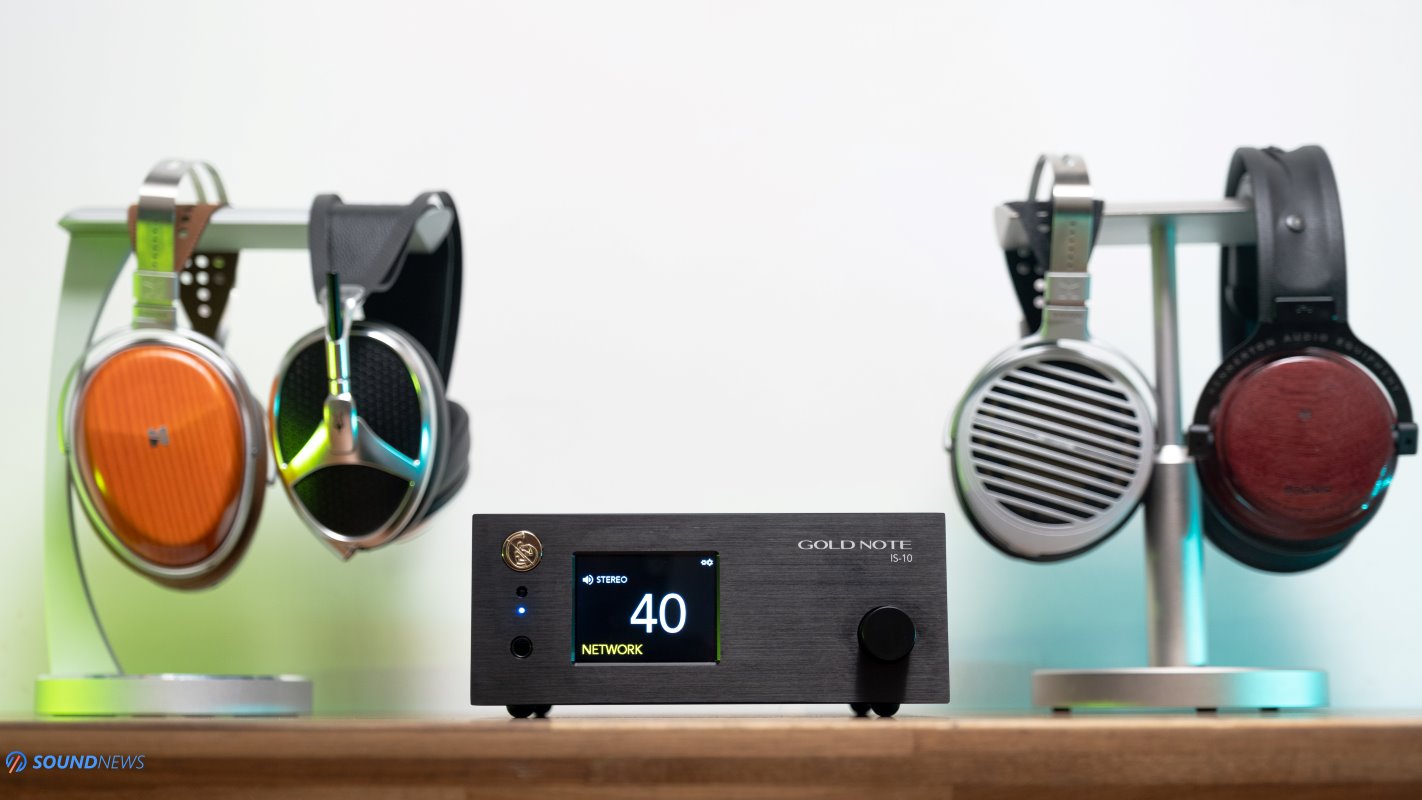
IV. Headphone Amplifier Section
Please, withhold those raised eyebrows. The head-fi movement stands as robust as its stereo counterpart, and unless you’ve been dwelling in a cave for the past 15 years, you’ve undoubtedly sensed its impact. Despite my stereo setup, there are several musical genres that I reserve exclusively for my headphone system. In a household with a playful kid and a lovely wife, I can’t subject them to the ominous tones of my usual musical choices. Hence, everything twisted, eerie, punchy, and dopamine-inducing finds its way through a set of high-quality headphones. I proudly identify as a 50/50 head-fi enthusiast and stereo head, cherishing and respecting both setups. I comprehend the allure of headphones versus speakers and value both HiFi movements; they will forever remain integral to my audio experience. The fact that a regular 6.35mm jack graces the faceplate is a testament to the importance of headphone listening for me.
As the DS-10 PLUS already demonstrated ample power, successfully driving all my headphones except for the obstinate black sheep – the HiFiMan Susvara, I was intrigued by Gold Note’s advancements in the IS-10. In essence, they did not disappoint! Beyond the improved control over the drivers and a more pronounced punch in the lowest octaves, the power output received a substantial boost in dynamics. While the DS-10 PLUS struggled to handle the HiFiMan Susvara, often reaching a breaking point around the ~90 – 92 volume level due to high current demands, the IS-10 effortlessly kept its composure. I never had to surpass 75 out of 100 for a similar sound pressure level, and, crucially, the sound remained unblemished even with bass-heavy music. Electronic music, in particular, resonated magnificently on the IS-10 with the Susvara – a feat that proved challenging for the DS-10 PLUS. In essence, this compact companion has the capability to propel the mighty Susvara close to its maximum potential. There were no hiccups, and no sluggish dynamics; everything flowed seamlessly, delivering a fast, punchy, and explosive musical experience. For about a month, the Susvara and IS-10 tandem were all I needed to feel on top of the mountain.
The IS-10 isn’t limited to driving bookshelf and stand floor speakers; it boasts the ability to handle virtually every headphone out there, excluding electrostatic ones. It effortlessly drove an array of headphones, including Sennheiser’s high-impedance HD800S, marvels from Meze Audio, Kennerton, Erzetich’s finest, and, of course, the formidable planars from HiFiMan, such as Arya Stealth/Organic, Audivina, and the mighty Susvara. Just remember to engage high gain through the user menu or from the GN Control App, and watch those ears take flight to the rhythm of the music.
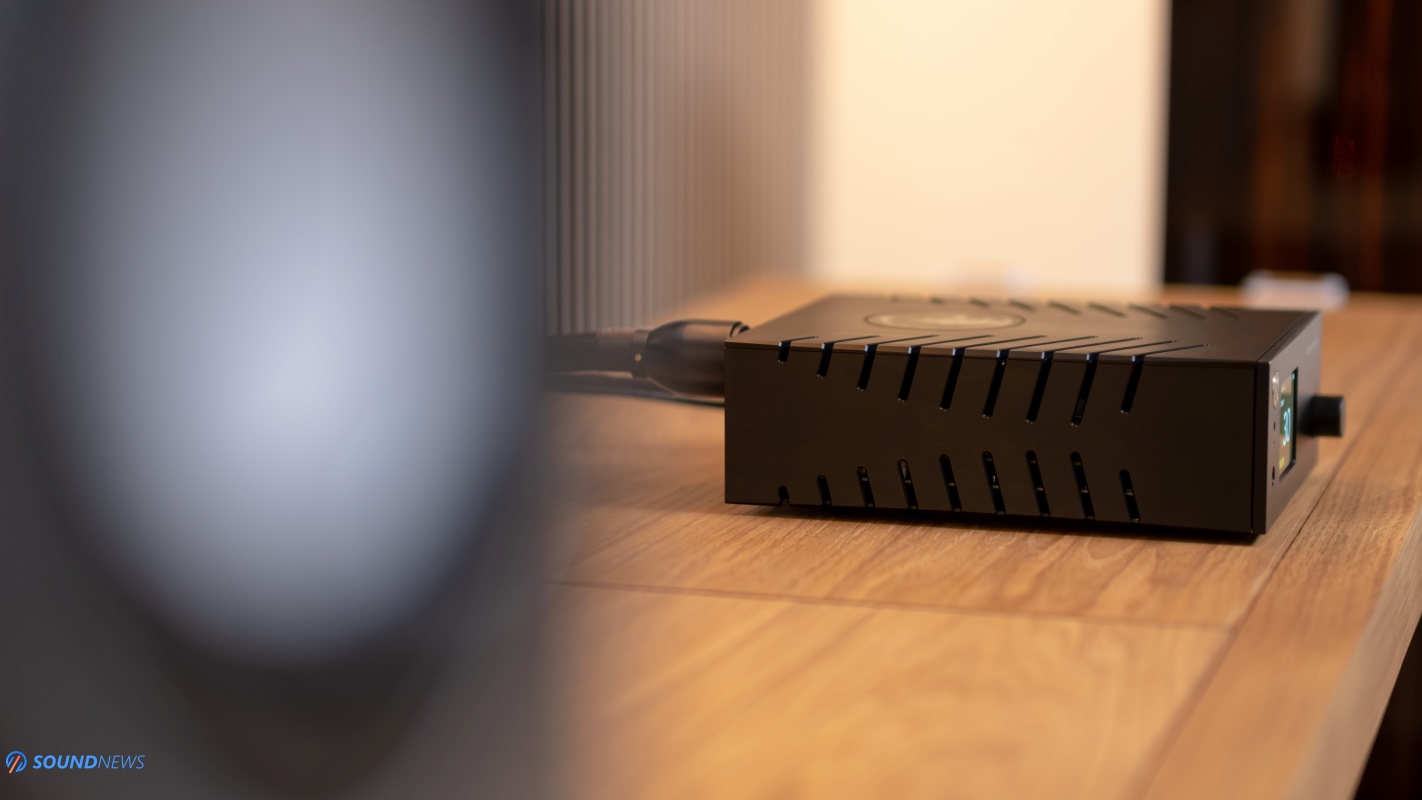
V. Soundstage & Imaging
There’s something that deserves its own chapter, as I was impressed by the layering and air around the notes not only via headphones but also via loudspeakers. Having tried a bunch of all-in-one devices by now, all of them were impressive with their feature set, but after weeks of use and abuse, there would always be something less impressive and something that would stand out head and shoulders above anything else. That’s the case with everything reviewed around here, the IS-10 won’t win the resolution game versus an EverSolo DMP-A6 or versus a similarly priced dedicated DAC, however, it will win the tonality game, sounding richer, denser, and more powerful.
However, there’s a game that IS-10 knows so well that I feel that comparisons are no longer needed and that’s the soundstage and imaging. The IS-10 won’t need weeks of burn-in, as it does not have a complicated layout and highly populated PCB design, and in a couple of days, it will be offering you maximum performance. Clean up the mains and the Ethernet connection and you’ll experience an extra boost of performance, which I experienced mostly in the soundstage department.
I’ll be honest with you, the IS-10 didn’t sound bigger than my setup, which is considerably costlier, however, it did sound bigger compared to an EverSolo DMP-A6 connected to a Topping LA90 Discrete. The difference wasn’t only in the soundstage department per se, but on how much air was circling around every note. The listening space was huge via the IS-10, and getting these void spaces in between the notes was a pleasant surprise that I didn’t see coming from such a compact unit.
Maybe resolution isn’t the best, but the spatiality of this thing and the three-dimensionality that it’s capable of are nothing short of spectacular. IS-10’s sound is slightly bigger than that of a regular DAC coming from Asia, enveloping you fully, and letting you choose the focus point. What I mean by this is that the sounds will never encroach upon you, and never interfere with your personal space. There is a decent amount of space between each musical note, which creates a sizable map of the music you’re listening to.
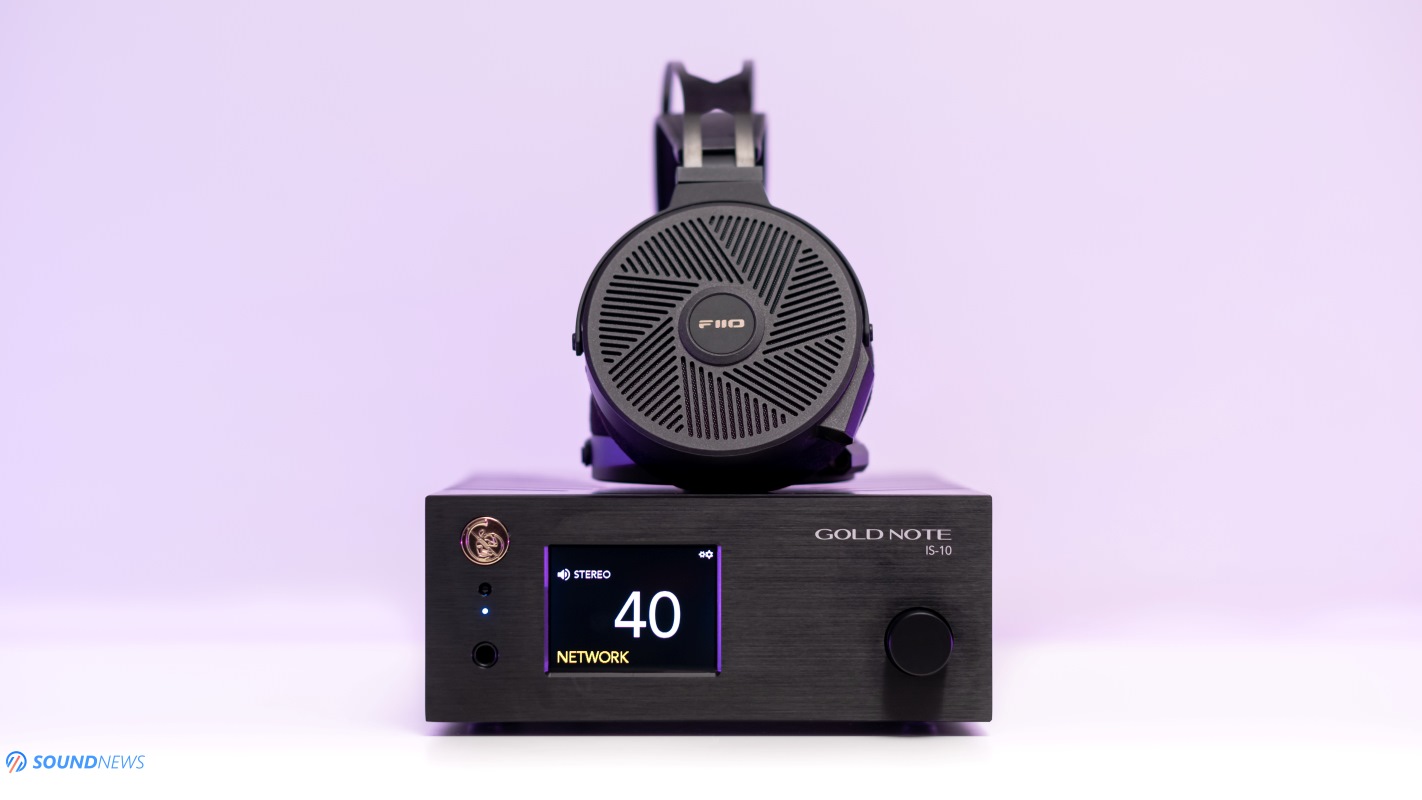
VI. Dynamics & Transients
Fresh from our recent visit to Audio Group Denmark’s Aalborg factory, where every component, from cables to electronics to speakers, is meticulously crafted in-house, and while I’ve had the pleasure of engaging with Michael Borresen and Lars Kristensen on various occasions, delving into the intricacies of their acoustic designs, I’ve never had the proper time to sit down and discuss acoustics with math, chemistry, and physics combined. This time, however, we had all the time in the world, and in just a few hours, Michael proved me wrong on so many aspects.
The linear power supply and the Class-A amplifiers were a hot topic of discussion, and instead of copying half-century-old designs and putting a new logo on top, they went to something new, small, lightweight that wouldn’t consume too much power. I’ll tell you more in the upcoming Axxess Forte 1 and Borresen X2 loudspeaker reviews, but some of that technology can also be spotted in Gold Note units. They’ve been using hybrid power supplies for a while now, I first encountered them in the PSU-10 EVO, merging a linear and a switching mode power supply, taking advantage of both.
The IS-10 doesn’t have the internal space for a complicated layout, going instead with a switching mode power supply implementation and hybrid amplifier stage built for high performance and speed. Speed you say? Did this guy had enough Aperol spritzes for today? Apparently not. A well-designed switching mode power supply will deliver instant current to the amplifier stages without the need for big storage capacitors. That’s how Axess Forte 1 was built, and that’s how IS-10 is rocking the crowd as well.
Maybe not the most technical and clean-sounding unit out there, but the IS-10 is surely revving up nicely when the music asks for it. Fast-paced music never felt sluggish or out of control, and the shifts in dynamics were happening faster than a speeding Ferrari SF90 Stradale on a highway. Dynamics and fast transients won’t pose a problem for the little IS-10, however, absolute control over the drivers wasn’t always the case, especially with the stiff ceramic drivers of the Sound of Eden Crescendo UNO. I didn’t feel a lack of cojones, grunt, and power with the little guy, but some extra horsepower will surely shorten those lap times and tighten up the sound, especially with low-sensitivity loudspeakers like these, and that’s where an extra PA-10 EVO could give a helping hand.
Overall, the dynamics and transients felt punchy and alive, but the control of the drivers could be improved down the road when used with demanding loads.
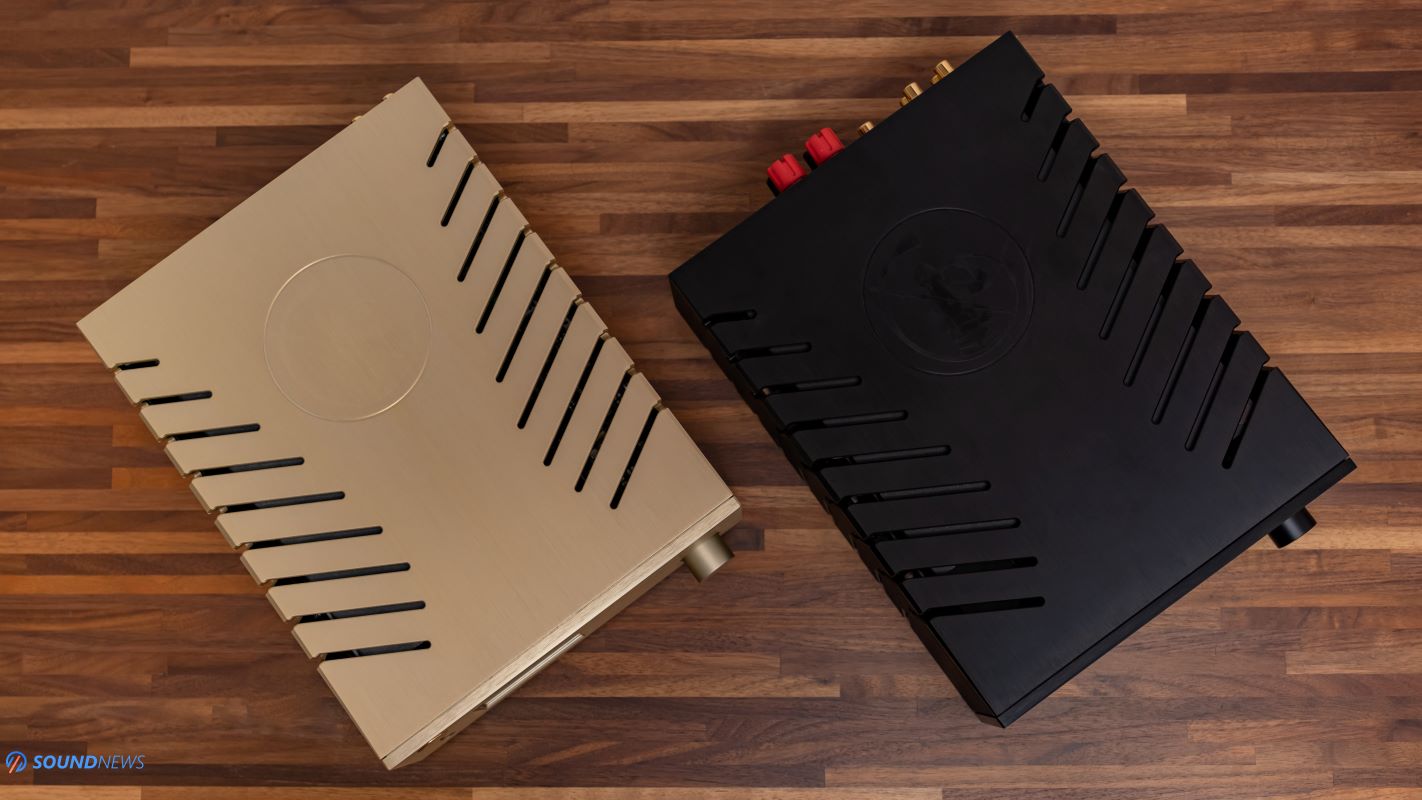
Frequency Response
VII. Bass
The bass emanating from this thing can be truly formidable, imbued with a menacing presence and remarkable authority. It sustains beautifully when the music demands it, gradually dissipating in a natural manner. While not the fleetest of feet, the bass is not lacking in substance; its decay is notably extended, a trait that particularly benefits acoustic music. The bass is consistently full-bodied, delivering a satisfying punch and a physical presence that is quite commendable. I couldn’t ask for more quantity, even when driving bookshelf speakers; the bass delivery is always substantial, providing a solid foundation for the entire sonic experience. It even manages to awaken low-intensity bass notes from bookshelf speakers, gently boosting their low-end response. To enhance the purity and layering of the bass, consider connecting the IS-10 via an Ethernet cable instead of using Wi-Fi; even better, invest in a high-quality Ethernet switch, which is known to rectify any muddiness in this frequency range. The bass’s purity and layering may not be immediately apparent, but with a thoughtful selection of accessories, you can elevate it to new heights. The IS-10 alone effectively controls the MA Platinum 200 G3 speakers, but during particularly frenetic electronic tracks, the music doesn’t feel as tight anymore. Perhaps partnering the IS-10 with the PA-10 EVO, which triples the power output and completely eliminates channel crosstalk, would tighten up the music’s overall presentation.
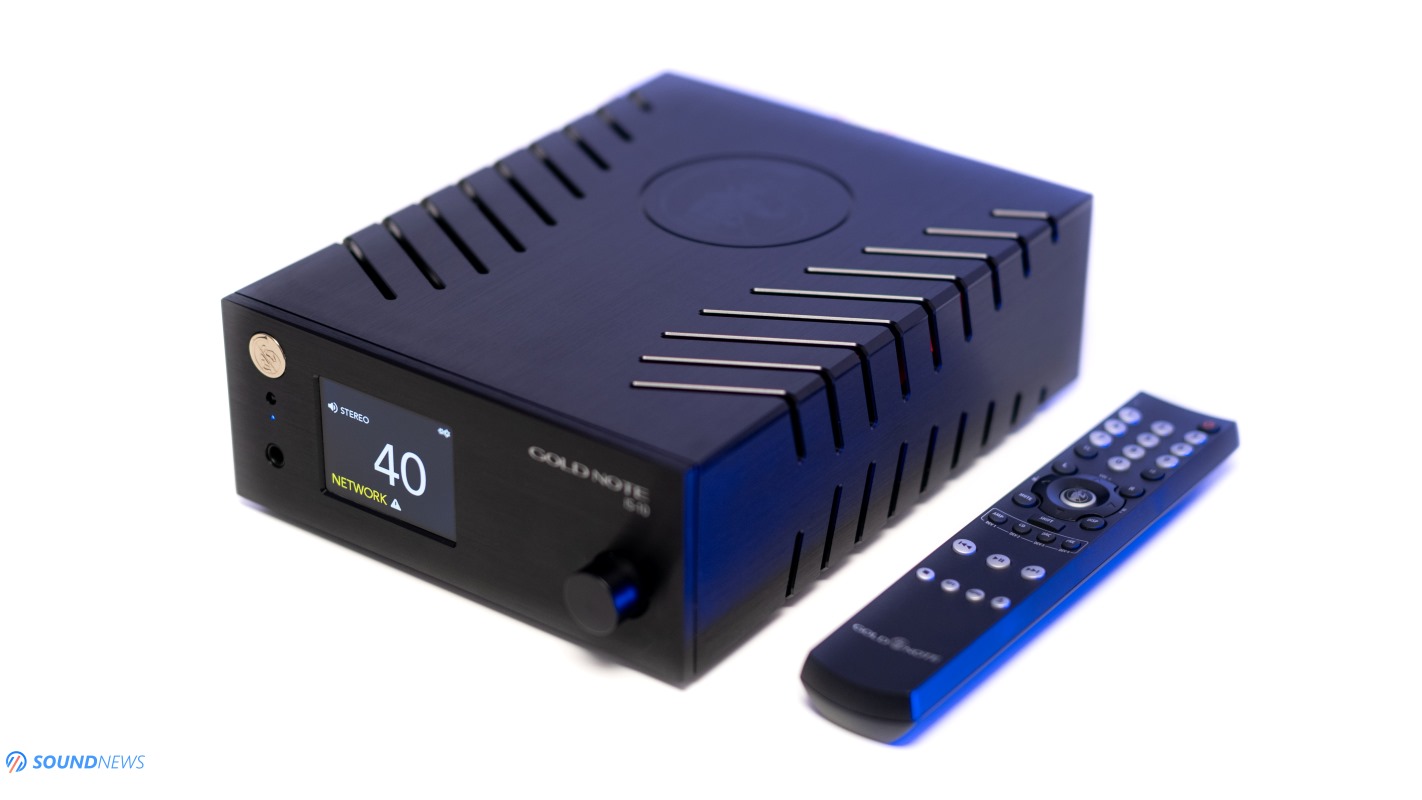
VIII. Midrange
Their DS-10 Plus charmed me with the midrange section more than anything else, always sounding sweet, organic, and natural. IS-10 is certainly going in the same direction, but it’s not reaching the same refinement levels. It’s playing in the same league performance-wise, it always relaxes me, the focus doesn’t go on the micro-scale, but on the grand scheme of things, on the music as a whole, mimicking the sound of a great-sounding turntable. I find it meatier and richer sounding compared to an EverSolo DMP-A6, sounding a hair more organic and easier going as well. Neutrally tuned setups, including these five pairs of speakers that have been used will surely benefit from an added midrange presence, sweetening their tonal balance, adding warmth into your listening space, and injecting a higher dose of dopamine into your bloodstream. Usually, chip-based converters aren’t so strong in this department, but I’m sure Gold Note’s know-how mixed with AKM’s Velvet Sound Technology added flow and effortlessness into the most important frequency range. This is a smooth and quite a romantic-sounding all-in-one unit, showing off its different character and point of view, which is a nice change of pace in a world of analytical-sounding units.
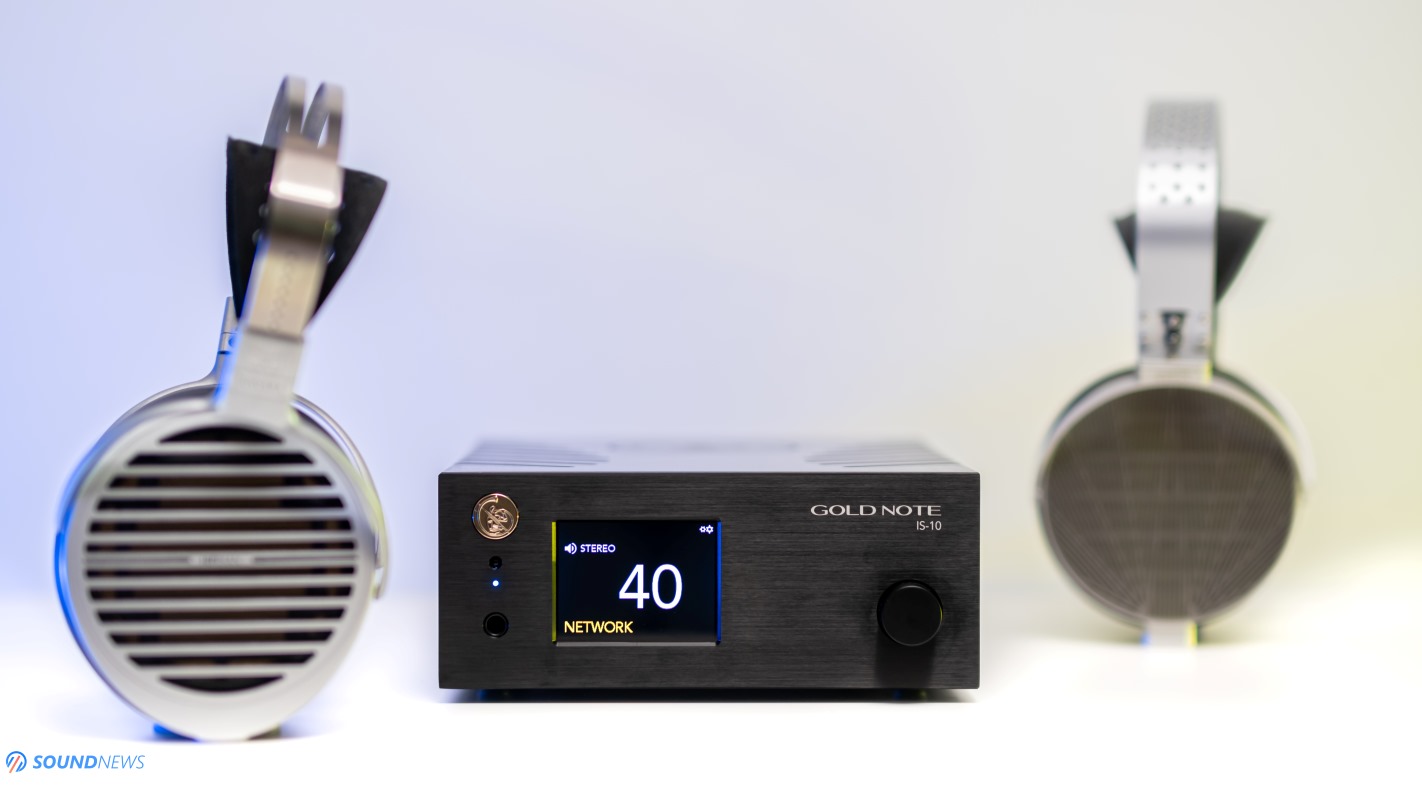
IX. Treble
The ribbon MPD tweeters of the Monitor Audio Platinum 200 G3 speakers awaken treble information like no other speakers I’ve encountered in my listening room. The ceramic tweeters of the Sound of Eden Crescendo UNO and KEF’s Reference 3 speakers are similarly potent in this region, all striving to showcase their resolving abilities, reproducing treble with a precision that often exceeds our hearing capabilities. Pairing these speakers with a neutral or bright-tilted source or amplifier can lead to listening fatigue. Still, the IS-10, much like its predecessor, the DS-10 Plus, stands apart, offering a harshness-free presentation that works wonders with aggressive music or with ultra-resolving speakers. The HiFiMan Susvara headphones also demand a special ingredient to sound their best; in addition to an extremely powerful amplifier that can control their drivers with an iron grip, they also require a refined upper treble that avoids introducing any traces of glare. The IS-10 handles the Susvara and the rest of my headphones with remarkable aplomb, and I must say I was impressed with how it tamed the Monitor Audio Platinum 200, which can be overly bright when partnered with the wrong equipment. If you seek a silky-smooth experience that eliminates any hints of digital harshness, consider adding an LHY SW-6 or SW-10 ethernet switch before the IS-10; this will further enhance the sweetness and liquidity of the sound. The leading edges of the treble aren’t sharp, ultra-defined, or outlined; instead, the treble region remains unobtrusive, never demanding full attention. With an IS-10, worries about listening fatigue or excessive brightness can be cast aside. Ultimately, the IS-10 covers the frequency spectrum comprehensively, emphasizing the bass and midrange while marginally reducing the treble.
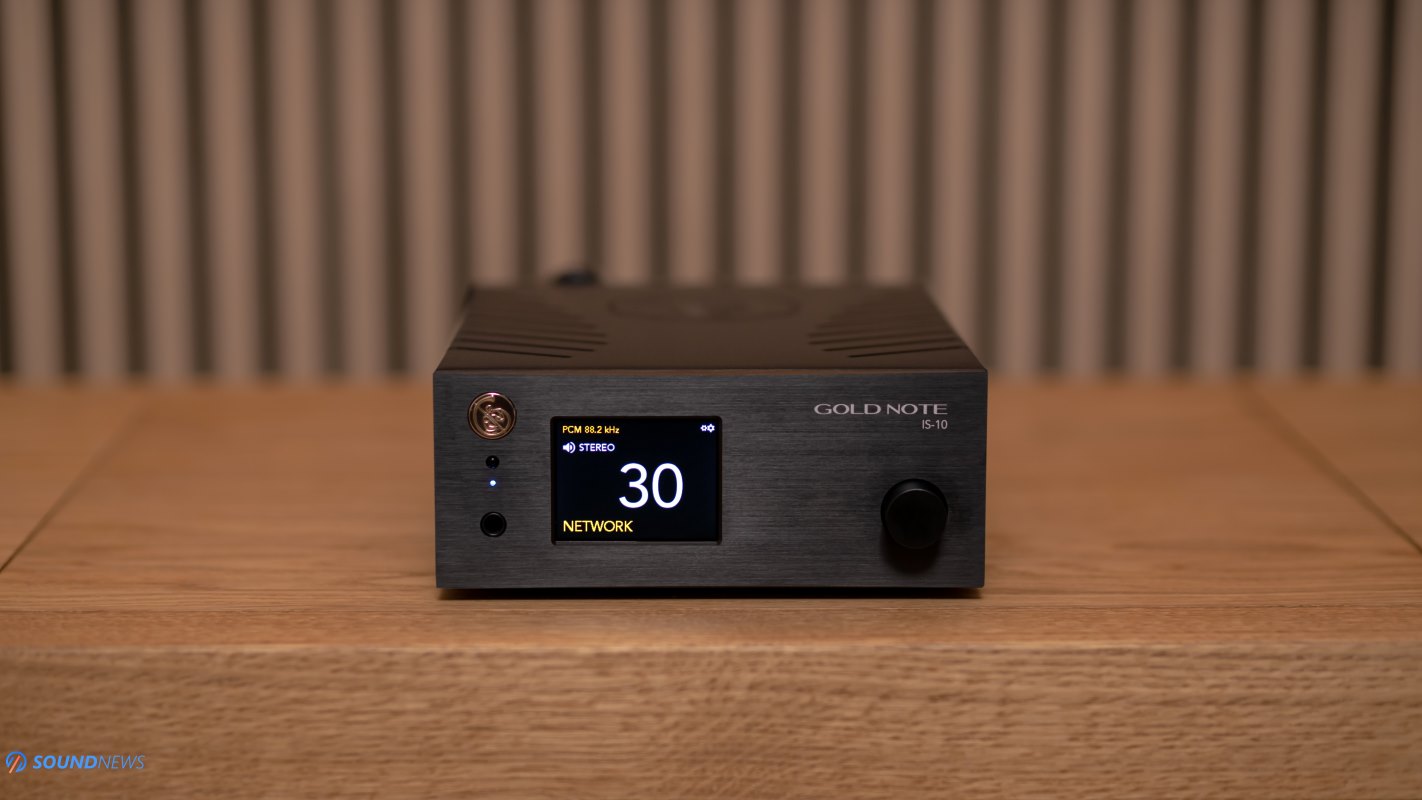
My Conclusions
Can one unit replace a dedicated streamer, music server, Roon endpoint, DAC, preamp, integrated, and headphone amplifier? Absolutely! Gold Note’s IS-10 performance and unbeatable feature set attest to this. While you won’t get the touchscreen of the EverSolo DMP lineup, nor the elegant UI and dedicated SSD slot, you can still add a flash drive via the USB Type-A port on its back and the GN Control App provides all the features a music lover could ask for. The biggest streaming platforms are already on board, and if you’re not keen on third-party apps, you can always use Tidal and Spotify Connect or even Apple’s AirPlay for ultimate convenience.
In the end, was this a perfect unit? It wasn’t in the early days of use due to a buggy UI, and its resolution wasn’t quite up there with the best units I’ve tried. There was also a slight noise coming from Raidho’s TD2.2 and Audiovector’s QR5 tweeters when sitting close to them. But hey, the IS-10 was never meant to topple the best units out there; that’s the job of their IS-1000 MKII, which I’m hoping to try next year. IS-10 is hard to beat on European soil, and I’m confident it will fare just as well against its closest competitors anywhere else. The WAF is going through the roof with this one – its footprint is tiny, and you won’t need massive racks to support its petite body weight. This is about as Future-Fi as it gets, and that’s why IS-10 just won my Product of The Year award!

This is my last article and video for 2023, and I wanted to end with something worthy of being placed under a Christmas tree. The streamer and DAC sections worked as expected, delivering a technical yet highly entertaining sound. The integrated and headphone amplifier sections weren’t slouches either, fully powering five pairs of loudspeakers and a wall of headphones without reaching upper power limits. A massive headroom was always available, and I don’t see the need to add the PA-10 EVO if you don’t require earth-shattering volumes. However, if you want the absolute best out of it, add a PA-10 EVO for the ultimate driver control, followed by a HiFi switch to further enhance its performance.
IS-10 is a true value champion and quite possibly, a giant killer all-in-one that challenges separates. I can see why many will opt for this route instead of having anywhere between four to six units for a similar feature set.
Gold Note IS-10 will set you back €2.900 in Europe and ~$3.000 in the US, and you can get it from your nearest Gold Note distributor. In case you’re getting a unit, please say Hi and drop me a line in the comments section below. As Christmas approaches, I want to thank you all for reading, following, sharing, and viewing our content. It means a lot to us! Your love and support will be repaid in some way or another. Wishing you a Merry Christmas and a Happy New Year, filled with interesting adventures and good fortunes! Several surprises in the pipeline can’t be revealed yet, but please stay tuned for more; the best is yet to come!
PROS:
- Italian design at its finest, IS-10 is simple yet exquisitely beautiful.
- Petite footprint, earning it the highest Wife Acceptance Factor among audiophile products.
- Rock-solid build quality, complemented by one of the most elegant remote controls I’ve ever held.
- Feature-packed to its core, there isn’t a function IS-10 doesn’t already possess.
- GN Control App seamlessly integrates with both iOS and Android devices, unlocking the full potential of the IS-10.
- Powerful integrated amplifier section, capable of driving five pairs of loudspeakers with ease.
- Powerful headphone amplifier section, effortlessly driving even the most demanding headphones.
- A versatile array of I/O, supporting most digital inputs imaginable.
- Smooth, easy-going, sweet, and warm-sounding audio, devoid of harshness or listening fatigue.
- Expansive soundstage that surpasses expectations, with clear and defined stereo imaging.
- Punchy, impactful performance across the board, even with demanding headphones.
- Highly engaging and entertaining sound that prioritizes enjoyment.
- A truly Future-Fi product, epitomizing the latest advancements in audio technology.
- An outstanding price-to-performance ratio
CONS:
- While resolving, the DAC section doesn’t quite reach the pinnacle of high-end audio reproduction.
- A slight hiss was detected with Audiovector QR5 and Raidho TD 2.2 loudspeakers when standing near the speakers. This noise was absent from the listening position.
- A buggy user interface (UI) marred the initial months of use. This issue was resolved with the FW 2.2.8 update.
ASSOCIATED EQUIPMENT:
- DACs: Gold Note IS-10, DS-10 PLUS, Rockna Wavedream Signature, Chord Electronics DAVE,
- Wireless Streamer & Music Server: Gold Note IS-10, Rockna Wavedream NET 4TB, EverSolo DMP-A8
- DDCs: Singxer SU-6, Matrix X-SPDIF 3
- Headphone Amps: Gold Note IS-10, Trafomatic Primavera, Enleum AMP-23R, Ferrum OOR & HYPSOS, Burson Soloist 3X GT 2023, Flux Lab Acoustics Volot
- IEMs: HiFiMan Svanar, Westone Mach 50, Hiby ZETA, Meze Rai Penta, FiiO FX15 & FH9, 7Hz Timeless AE, Kinera Skuld & others
- Full-sized headphones: HiFiMan Susvara, Arya Organic, Audivina, Ananda Nano, Meze Elite & 109 PRO, Erzetich Charybdis & Phobos V.2021, Sennheiser HD800S, Kennerton Rognir (planar) & Vali, Apos Caspian, Sendy Peacock & Apollo, FiiO FT5, HarmonicDyne Elite & Poseidon, Moondrop Venus & others
- Preamps: Chord Electronics Ultima 3 Pre
- Power Amps: Chord Electronics Ultima 5 Power, Burson Timekeeper 3X GT (x2)
- Integrated Amps: Gold Note IS-10
- Loudspeakers: KEF Reference 3, Monitor Audio Platinum 200 G3, Audiovector QR5, Sound of Eden Crescendo UNO, Raidho TD2.2
- Ethernet Switch: Ansuz PowerSwitch D3, LHY Audio SW-10
- Interconnects: Crystal Cable Reference2 Diamond (x3), QED Reference (x2), Topping TCX1 (x2)
- USB Cables: Supra USB Excalibur (x2), Chord C-USB, Matrix Hi-Fi USB
- HDMI Cables: Audioquest Diamond DBS, Supra 8K HDMI
- Speaker cables: Kimber PR8, Audioquest Type4
- Power Cables: Crystal Cable Reference2 Diamond (x3), Isotek EVO3 Premier (x2), iFi Audio SupaNova (x2)
- Balanced Isolation Power Conditioners: PLiXiR Elite BAC1500 (stereo setup), KECES IQRP-1500 and P14 (headphone setup)
